222^333 Or 333^222 - Which Is Bigger ?
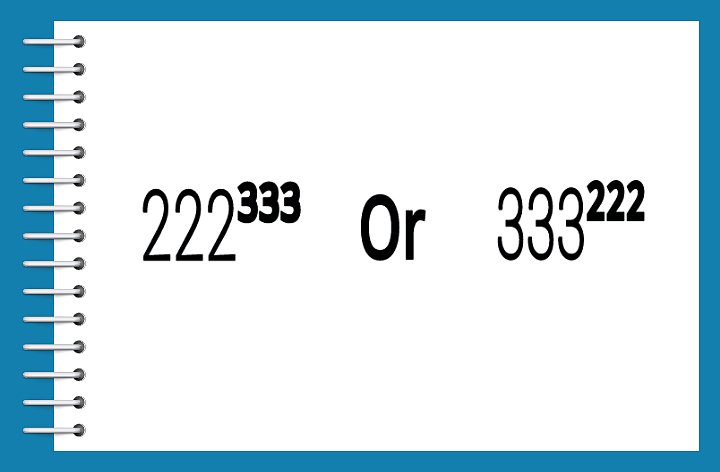
I happened to come across this question on a YouTube channel some days ago and it captivated me - basically because I love math. The two operations would actually yield humongous numbers but what's more interesting is that you are required to tell which of the two is bigger without a calculator.
Is 222^333 bigger than 333^222 or is it the other way round ?
However, even if you punch those numbers in a calculator you may still not be able to tell which is bigger. For example, below is what my phone's calculator gave for both operations.
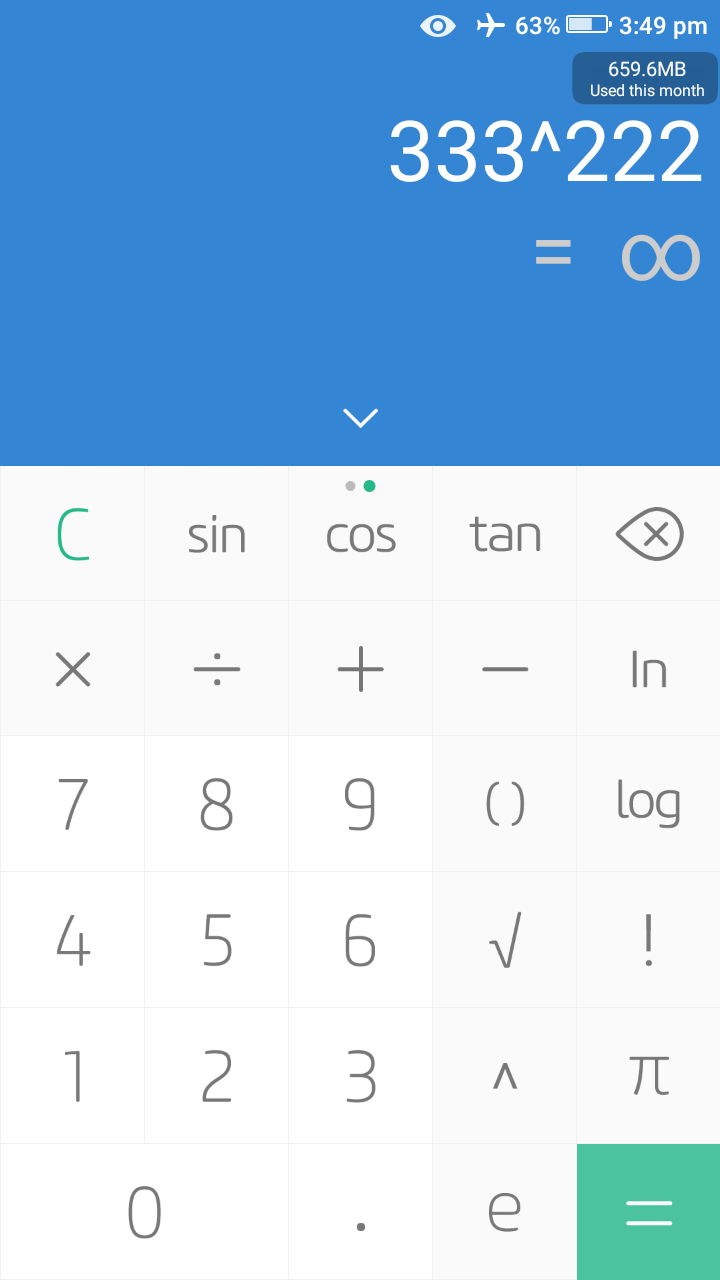
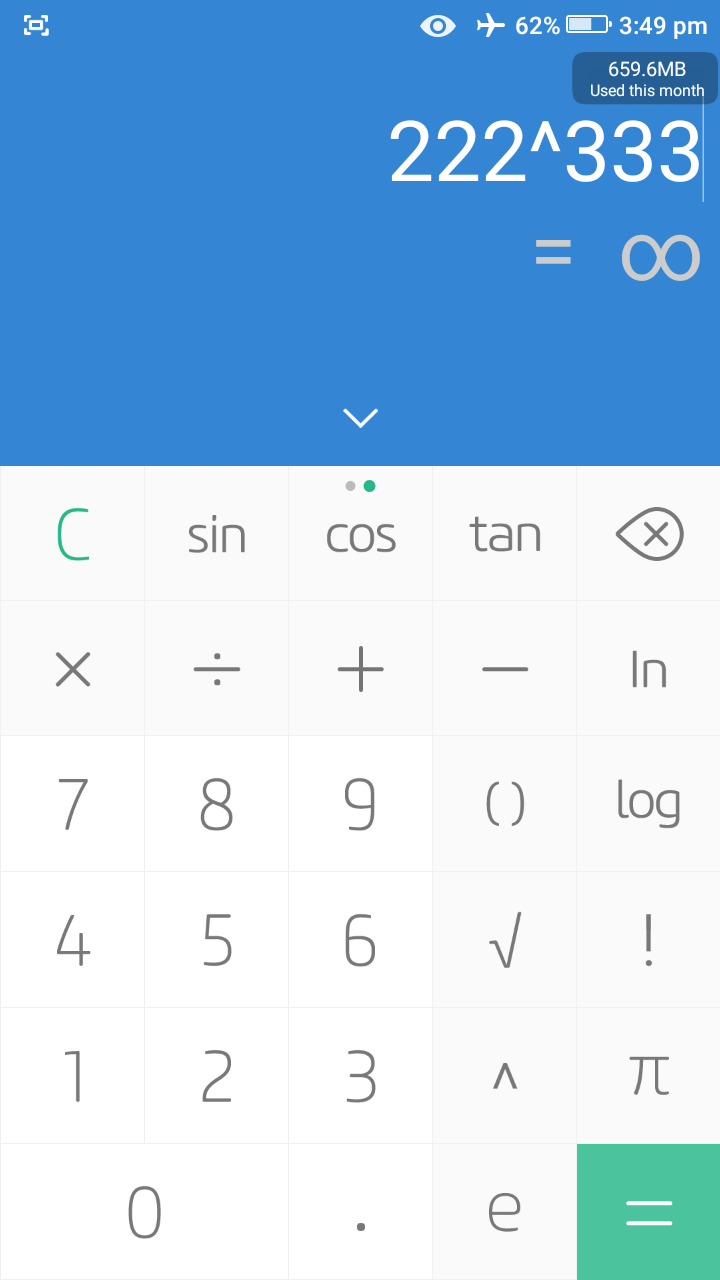
Which means if I wanted to cheat by using my phone's calculator I'll still get fucked up. 😂
Some of us think calculators are better than us, especially in terms of speed but what you don't know is that calculators despite the speed also have limits. One plausible reason why my phone's calculator didn't give me a definitive answer is likely due to memory capacity, it's processing memory can't contain all the numbers - remember i said earlier that those operations would yield humongous numbers. There could be other reasons though.
With the way the question was presented (not involving a calculator), the first thing that comes to mind is that there most be a trick to telling which is bigger without having to know the result of the operations and this is where our brains superiority to calculators comes in.
I however did not play the video to know how they got which was bigger. I sometimes don't search for other people's solutions to certain problems so as make my own discoveries and better understand it. It's been quite a relatively long while since i flexed my mathematical muscle - due to other problems, so it took me long to discover how to answer the question.
So, I'm going to share with us what i discovered.
To non-mathematians, such question looks very intimidating but we can make it less intimidating. In the early 17th century, John Napier discovered something very remarkable that would change mathematics and science for the better. He discovered a function that could simplify complex arithmetic and exponential operations or simplify arithmetic and exponential operations requiring very large numbers, this function is today referred to as the logarithmic function.
If we are going to make those operations look less intimidating, we are going to need the help of the logarithmic function. There are two popular types of logarithmic functions namely, natural logarithm(ln) and common logarithm(Log). For simplicity we would make use of the common logarithm (base 10).
Let A = 222^333 and B = 333^222
Following the rules of logarithm such that log(a^b) = b log(a), we would have
Log(A) = 333Log(222) or 333 × Log(222)
And
Log(B) = 222Log(333) or 222 × Log(333)
Notice that the exponential operations have been transformed into multiplication and now looks less intimidating . 😎
The next step would be to find what Log(222) and Log(333) are which looks also difficult because you would need a logarithm table or a calculator. We have no logarithm table nor a calculator, so how do we proceed further ?
Well, it's not very difficult if you are very familiar with logarithms. The common logarithm of any number usually requires two parts called the "characteristics" and "mantissa". The characteristics usually comes before the decimal point and the mantissa usually comes after the decimal point. The characteristics is easier to get of hand, simply count the number of digits of the number whose logarithm we are looking for and subtract 1 from it.
222 has three digits (the three 2's), the characteristics of 222 is 2 or (3 - 1)
So,
Log(222) = 2.
Notice the point (decimal) after the 2
Applying the same rule to Log(333), we have
Log(333) = 2.
Notice the point (decimal) again after the 2
Also, we would be having
Log(A) = 333 × 2.
And
Log(B) = 222 × 2.
But we aren't done yet and it's because we need to know the numbers after the decimal point (the mantissa). This mantissa part usually requires logarithm table of which we don't have but hope isn't lost, there's another trick.
However, merely looking at Log(A) and Log(B) it would seem that Log(A) is bigger than Log(B), both are sharing the same 2. but 333 is bigger than 222.
How can we be certain that Log(A) is indeed bigger than Log(B) ?
This can be known through what i call a test of strength as we shall now see.
In one decimal place, the mantissa can take on values "only" in the range of 0 to 9, what this implies is that from 2.0 to 2.4 we can approximate it to 2 while from 2.5 to 2.9 we can approximate it to 3. What we have just done is approximate the likely values of Log(333) and Log(222) using their upper and lower limit (3 and 2 respectively).
The next step is to test the strength of 333 and 222 using a permutation/possible operations that we could be presented with, using the above approximations. You can see it as a boxing match with different rounds between 333 and 222.
We can be presented with values of the kind below
Round 1 (First possibility)
Log(A) = 333 × 2 and Log(B) = 222 × 3
Which is bigger or the winner in round 1 ?
It is a tie (no winner) and it's because both of them have same result (666).
Round 2 (second possibility)
Log(A) = 333 × 3 and Log(B) = 222 × 3
Which is bigger or the winner in round 2 ?
It's obviously Log(A) and it's because 999 (333 × 3) is bigger than 666 (222 × 3).
Last Round (Final possibility)
Log(A) = 333 × 2 and Log(B) = 222 × 2
Log(A) wins again, 666 is bigger than 444
Log(A) had 2 wins while Log(B) had zero wins and there's a single draw. What this means is that Log(A) can either be equal to or bigger than Log(B) irrespective of the actual values of Log(333) and Log(222).
However, based only on number of wins, Log(A) is bigger. We can further confirm this with a calculator as seen in the images below, even though it's no longer necessary.
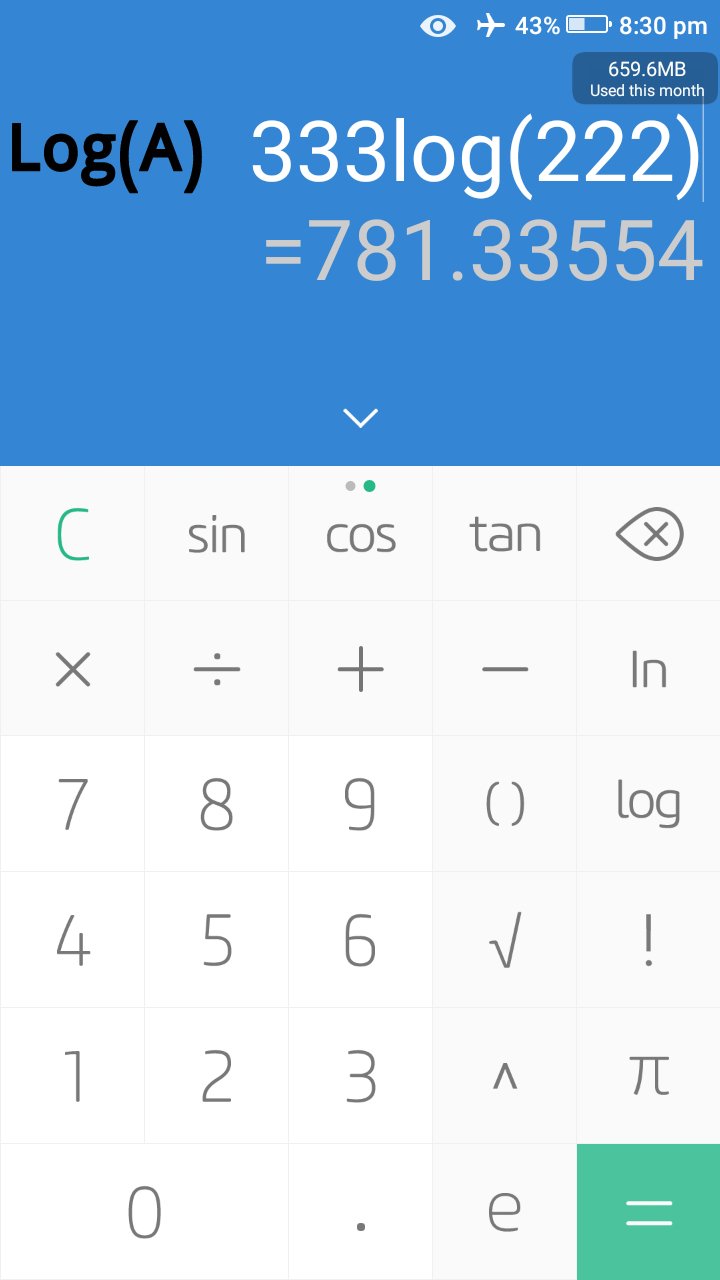
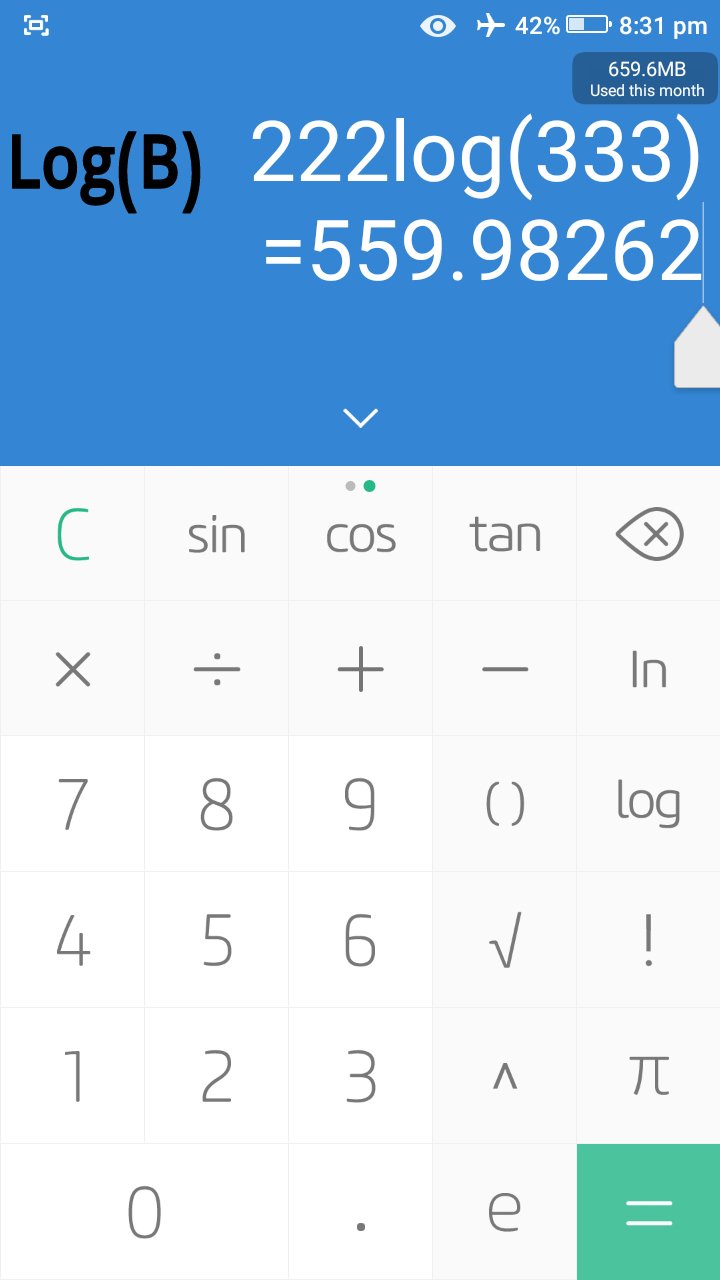
If Log(A) is bigger than Log(B), then A is bigger than B and it means that 222^333 is bigger than 333^222, it's as simple as that.
Math is sweet, you just have to love it. 😉
Thank you all once again for stopping by to read my jargons and also thank you @stemng, @lemouth and the @Steemstem team for your valuable supports.
Lastly, please don't forget to do the needful
Upvote
Comment
Reblog
If you enjoyed my jargons.


Congratulations!
✅ Good job. Your post has been appreciated and has received support from CHESS BROTHERS ♔ 💪
♟ We invite you to use our hashtag #chessbrothers and learn more about us.
♟♟ You can also reach us on our Discord server and promote your posts there.
♟♟♟ Consider joining our curation trail so we work as a team and you get rewards automatically.
♞♟ Check out our @chessbrotherspro account to learn about the curation process carried out daily by our team.
🥇 If you want to earn profits with your HP delegation and support our project, we invite you to join the Master Investor plan. Here you can learn how to do it.
Kindly
The CHESS BROTHERS team
Thanks for your contribution to the STEMsocial community. Feel free to join us on discord to get to know the rest of us!
Please consider delegating to the @stemsocial account (85% of the curation rewards are returned).
Thanks for including @stemsocial as a beneficiary, which gives you stronger support.
Yeah that was my guess, cos I figured exponents would count for more than the bases, which in this case had only a third of a difference between them.
Well, you would need to be very careful there, what would you say about 3² and 2³ ?
Oh that's easy, I would just calculate it :D
I didn't say I knew, I just guessed, as I didn't have the math skills to use any other way, so I kinda used some rough intuition or common sense or whatever you might call it. It just seems natural to me to assume that multiplying 222 111 times more by itself, would result in a greater number, seeing how powerful exponents are. That's not the case with 2 and 3 that are very close (even though the one third difference is still true here) and you're multiplying one of them just one more time by itself. But I don't know if this "intuition" is based on any solid underlying reasoning. It just seems that way to me.